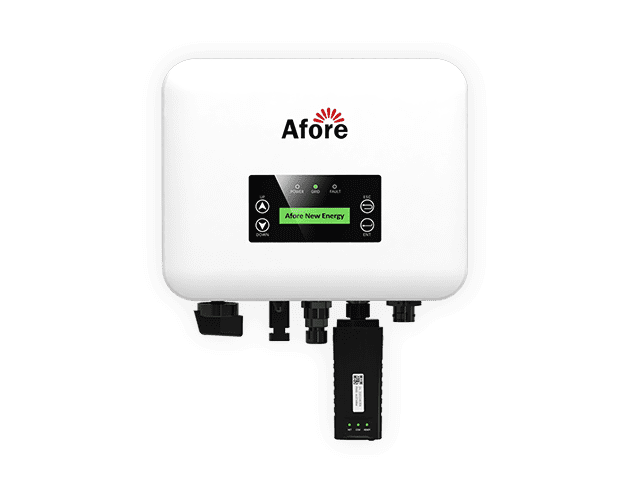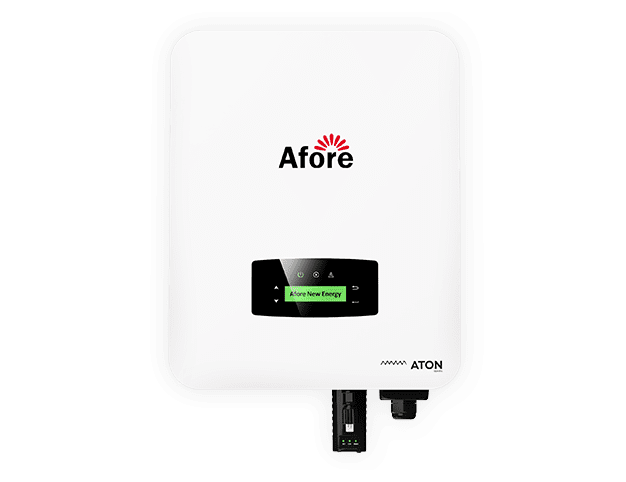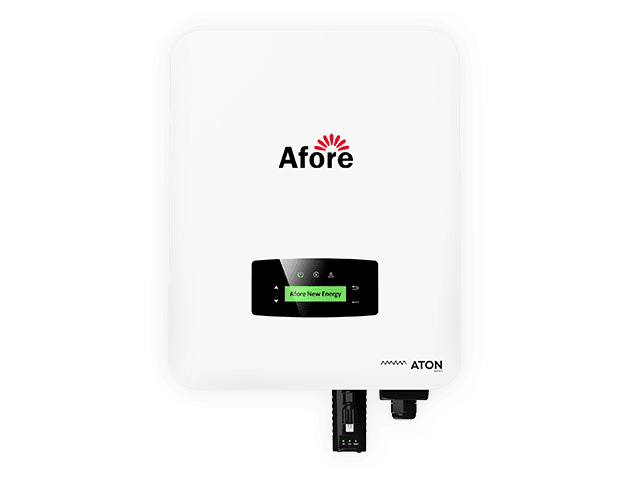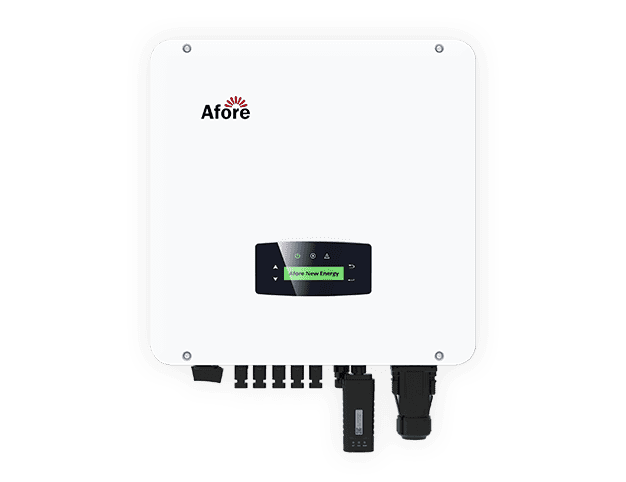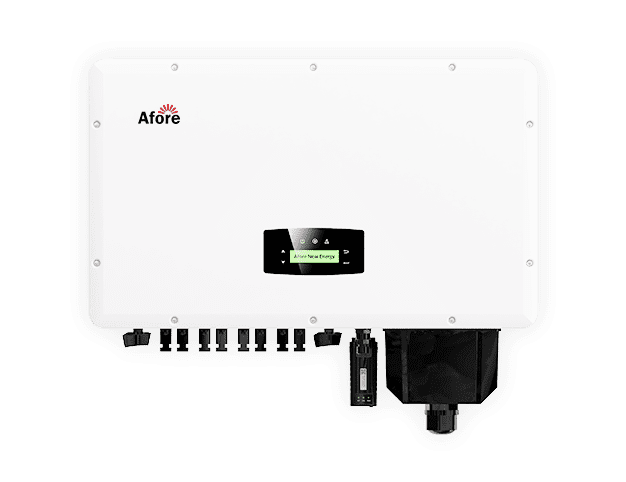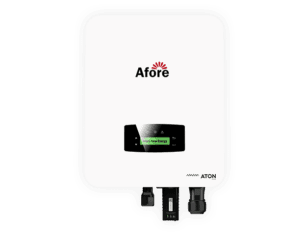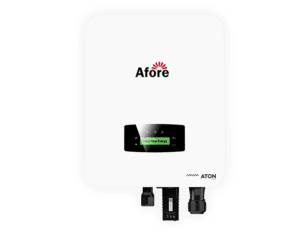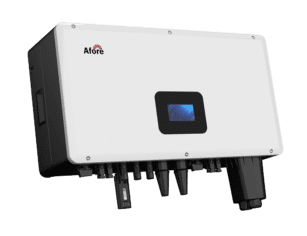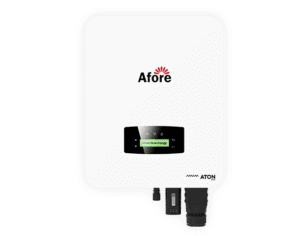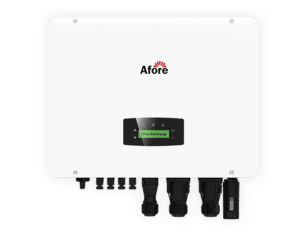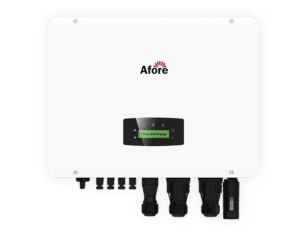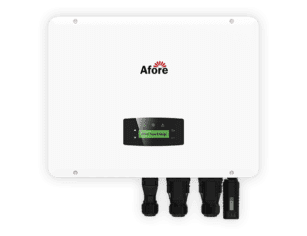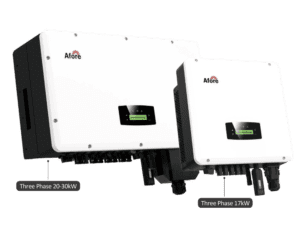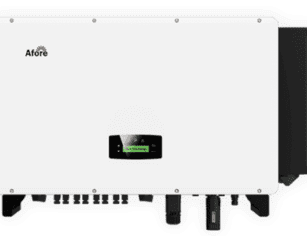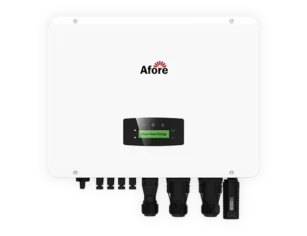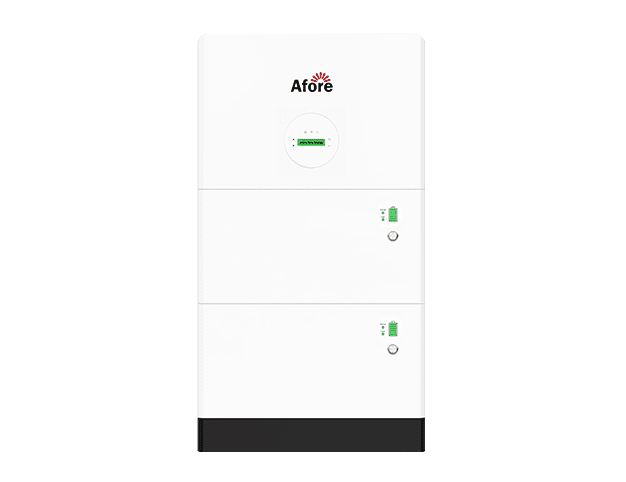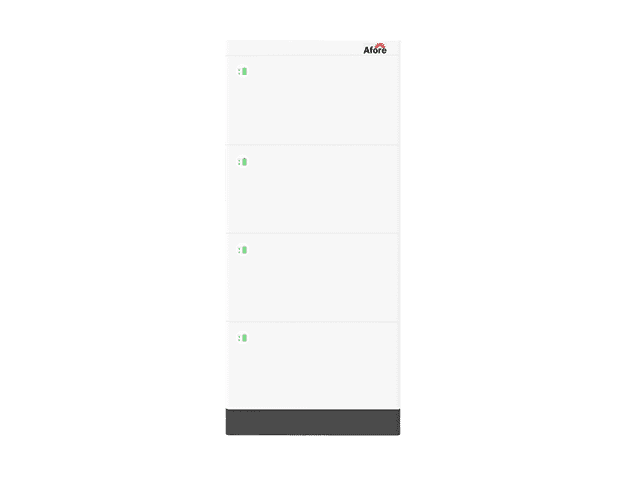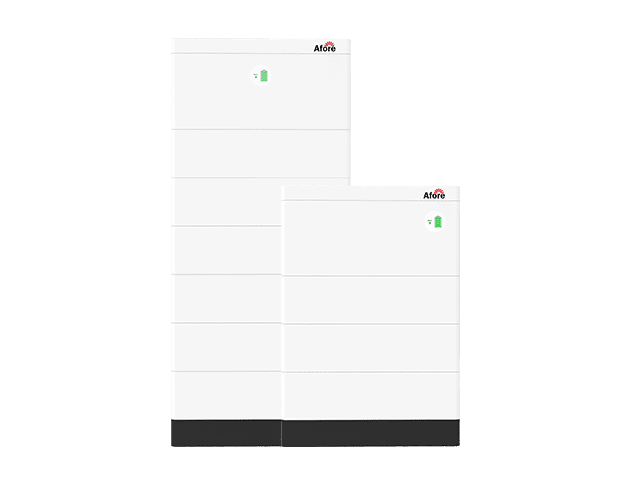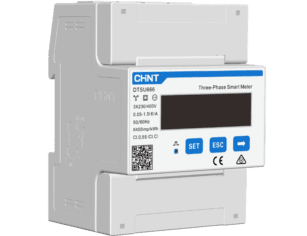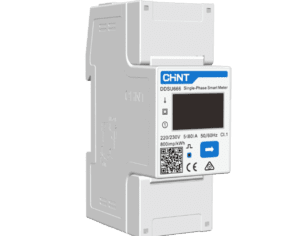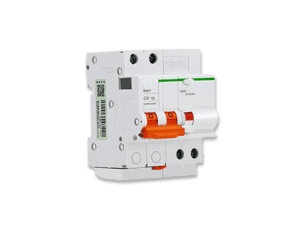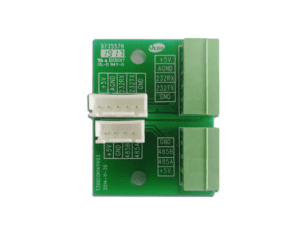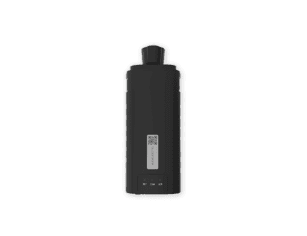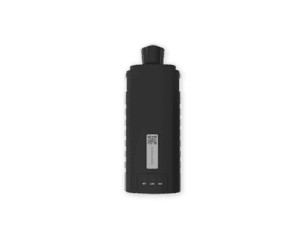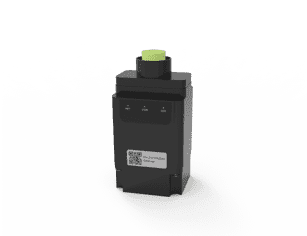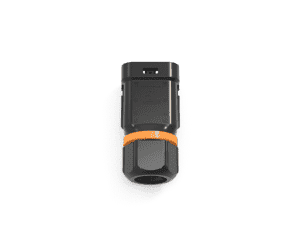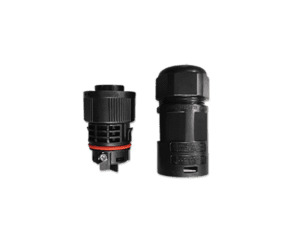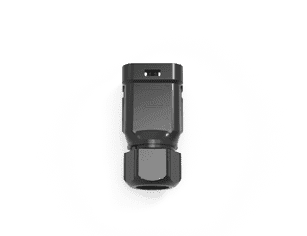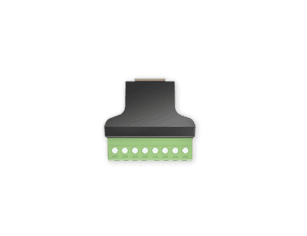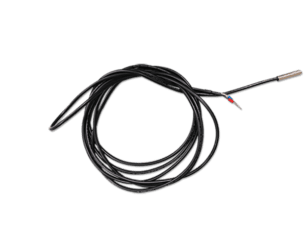Inversor de conexión a red frente a inversor de conexión a red: ventajas e inconvenientes

Índice
A la hora de planificar un sistema de energía solar, una de las decisiones más importantes, aunque a menudo olvidada, es elegir el inversor de conexión a red adecuado. ¿Debería conectarse a la red o ser totalmente independiente con un inversor solar aislado? La respuesta puede afectar a sus costes energéticos, a la fiabilidad del sistema e incluso a sus objetivos de sostenibilidad a largo plazo. Con el creciente interés en la independencia energética y el aumento de los precios de la electricidad, cada vez más propietarios de viviendas y empresas están sopesando los pros y los contras de los inversores conectados a la red frente a los inversores aislados. Esta guía detallada desglosa ambas opciones para que pueda elegir con confianza el sistema que mejor se adapte a su ubicación, estilo de vida y presupuesto. Tanto si se encuentra en un lugar aislado como si vive en el corazón de la ciudad, comprender el papel del inversor solar aislado es el primer paso hacia una energía más inteligente y limpia.
Introducción a los inversores de conexión a red
Cuando oímos hablar de energía solar, lo más probable es que pensemos en elegantes paneles sobre tejados tomando el sol. Pero hay una estrella menos conocida entre bastidores: el inversor solar. Tanto si está pensando en un sistema conectado a la red como en un inversor solar aislado, este componente es crucial. Sin él, toda la luz solar captada se desperdicia.
¿Qué es un inversor de conexión a red y cómo funciona?
Un inversor solar es el dispositivo que convierte la electricidad de corriente continua (CC) generada por los paneles solares en corriente alterna (CA). La CA es la forma estándar de electricidad utilizada en hogares y empresas. En esencia, hace que la energía solar sea utilizable.
En un sistema conectado a la red, el inversor solar se sincroniza con la red pública, devolviendo el exceso de electricidad a la red o tomándola de ella cuando es necesario. Por otro lado, un inversor solar aislado funciona de forma independiente, normalmente almacenando el excedente de energía en baterías para su uso posterior, sin necesidad de red.
Tipos de inversores de conexión a red
No todos los inversores solares son iguales. Existen varios tipos principales:
- Inversores monofásicos - Rentables, se utilizan tanto en instalaciones conectadas a la red como aisladas.
- Microinversores - Más eficientes, se instalan por panel.
- Inversores híbridos: compatibles tanto con sistemas conectados a la red como con sistemas de respaldo de baterías.
- Inversores solares aislados: diseñados específicamente para funcionar sin red eléctrica, a menudo combinados con baterías de gran capacidad.
Comprender las diferencias es vital a la hora de elegir entre un inversor solar conectado a la red o uno aislado.
¿Qué es un inversor de conexión a red?
Un inversor solar conectado a la red es un componente básico de cualquier sistema de energía solar conectado directamente a la red pública. Su función principal es convertir la electricidad de corriente continua (CC) generada por los paneles solares en corriente alterna (CA), que alimenta su hogar o negocio. A diferencia de un inversor solar aislado, que funciona de forma independiente y depende en gran medida de las baterías, un inversor conectado a la red funciona en sincronía con la red para proporcionar un uso continuo de la energía, lo que lo convierte en una opción excelente para propiedades en zonas urbanas y suburbanas con una infraestructura de red estable.
Al aprovechar la tecnología de los inversores solares, los sistemas conectados a la red pueden reducir significativamente las facturas de electricidad, permitir beneficios de medición neta y disminuir la huella medioambiental. Pero para entender bien este tipo de sistema, es esencial saber cómo funciona y cuáles son sus puntos fuertes y débiles.
Cómo funcionan los sistemas conectados a la red
En un sistema solar conectado a la red, su casa permanece conectada a la red eléctrica local. Los paneles solares recogen la luz del sol y generan corriente continua, que el inversor convierte en electricidad alterna utilizable. Durante el día, cuando los paneles producen más energía de la que se consume, el exceso se devuelve automáticamente a la red. Por la noche o con tiempo nublado, cuando la producción solar disminuye, su casa toma electricidad de la red para compensar la diferencia.
Esta interacción dinámica es posible gracias a un inversor conectado a la red, que se sincroniza constantemente con la tensión y la frecuencia de la red pública. No se trata sólo de convertir energía, sino de gestionar el flujo, la seguridad y el balance energético en tiempo real.
Algunas de las principales características operativas son:
- Protección anti-isla: En caso de corte de la red, el inversor solar se apaga automáticamente para evitar la retroalimentación, una medida de seguridad fundamental.
- Monitorización en tiempo real: Muchos sistemas conectados a la red ofrecen aplicaciones o plataformas de monitorización para hacer un seguimiento de la producción, el consumo y la interacción con la red.
- Compatibilidad con la medición neta: Su inversor de conexión a red trabaja codo con codo con los programas de medición de las compañías eléctricas para abonarle el exceso de generación.
A diferencia de un inversor solar aislado, que debe gestionar la energía por completo dentro de un sistema autónomo, los inversores conectados a la red dependen de la infraestructura de la compañía eléctrica, lo que los hace más sencillos en su diseño pero dependientes por naturaleza.
Ventajas de los inversores de conexión a red
1. Menor inversión inicial
Una de las ventajas más atractivas de los sistemas conectados a la red es su asequibilidad. Al no requerir almacenamiento en baterías, el coste inicial es significativamente inferior al de un inversor solar aislado. Menos componentes significan menos complejidad y un plazo de instalación más corto.
2. Medición neta y créditos de servicios públicos
Con la medición neta, los propietarios de viviendas pueden devolver el exceso de electricidad a la red y recibir créditos contra el consumo futuro. De este modo, el contador se pone al revés y, con el tiempo, puede reducir drásticamente o incluso eliminar las facturas de electricidad. El inversor solar desempeña un papel fundamental en este proceso, ya que gestiona el flujo de energía hacia y desde la red.
3. Uso eficiente de la energía solar
Un sistema conectado a la red garantiza que no se desperdicie nada de energía solar. Cuando sus paneles producen más, ese excedente se envía a la red; cuando producen menos, la red llena el vacío. El inversor solar gestiona todo esto en tiempo real, sin intervención manual.
4. Acceso a los incentivos
Muchos programas estatales, federales y de servicios públicos ofrecen incentivos financieros, créditos fiscales o descuentos para instalaciones solares conectadas a la red. Estos suelen aplicarse únicamente a los sistemas que se conectan a la red y se gestionan a través de un inversor solar cualificado.
5. Requiere poco mantenimiento
Sin baterías que mantener o sustituir, los sistemas conectados a la red suelen requerir menos mantenimiento. Un inversor solar de calidad con diagnóstico integrado puede alertarle de cualquier problema en una fase temprana, lo que garantiza su longevidad.
6. Ahorro de espacio
Al no necesitar un gran banco de baterías (como ocurre con los inversores solares aislados), los sistemas conectados a la red ocupan menos espacio, un factor fundamental para los propietarios de viviendas con poco espacio de almacenamiento interior o en salas de máquinas.
Desventajas de los sistemas conectados a la red
Aunque los sistemas conectados a la red son prácticos y rentables, no son perfectos. Hay ventajas y desventajas que todo propietario debe tener en cuenta antes de comprometerse.
1. Sin electricidad durante los cortes de red
Tal vez el mayor inconveniente sea que, aunque los paneles generen electricidad, la casa se quedará sin electricidad si se corta la red. Se trata de una medida de seguridad obligatoria. El inversor solar debe apagarse para evitar que la electricidad vuelva a alimentar las líneas eléctricas y ponga en peligro a los trabajadores de la compañía eléctrica.
2. Falta de independencia energética
Un sistema conectado a la red le ata -literalmente- a su compañía eléctrica local. Estará sujeto a los cambios en las tarifas eléctricas, los cambios de política y los posibles problemas de fiabilidad de la red. Por el contrario, un inversor solar aislado de la red proporciona total autonomía.
3. Flexibilidad limitada para ubicaciones remotas
En zonas con una infraestructura de red inestable o no disponible, los sistemas conectados a la red simplemente no son una opción. Requieren una tensión y una frecuencia de red constantes. En estos casos, un inversor solar aislado es la única opción viable.
4. Menor control del consumo de energía
Como el sistema depende de la retroalimentación de la red y de políticas como la medición neta, el ahorro de energía depende en parte de la normativa. Algunos estados están reduciendo los programas de medición neta, lo que reduce los beneficios económicos de las instalaciones conectadas a la red.
5. Vida útil del inversor más corta que en los sistemas aislados
Aunque los inversores solares modernos son fiables, la conmutación y sincronización constantes con las fluctuaciones de la red pueden desgastarlos con el tiempo. Un inversor de conexión a red típico dura unos 10-15 años, algo menos que algunos modelos de inversores solares aislados de gama alta que se benefician de unas condiciones de funcionamiento más estables.
6. Sin batería
A menos que optes por una configuración híbrida, tu sistema no almacenará electricidad para su uso posterior. Esto significa que cuando el sol no brilla y la red no funciona, las luces permanecen apagadas. Esta limitación está llevando a muchos propietarios de viviendas a considerar inversores híbridos o sistemas de inversores solares totalmente aislados de la red para mejorar su capacidad de recuperación.
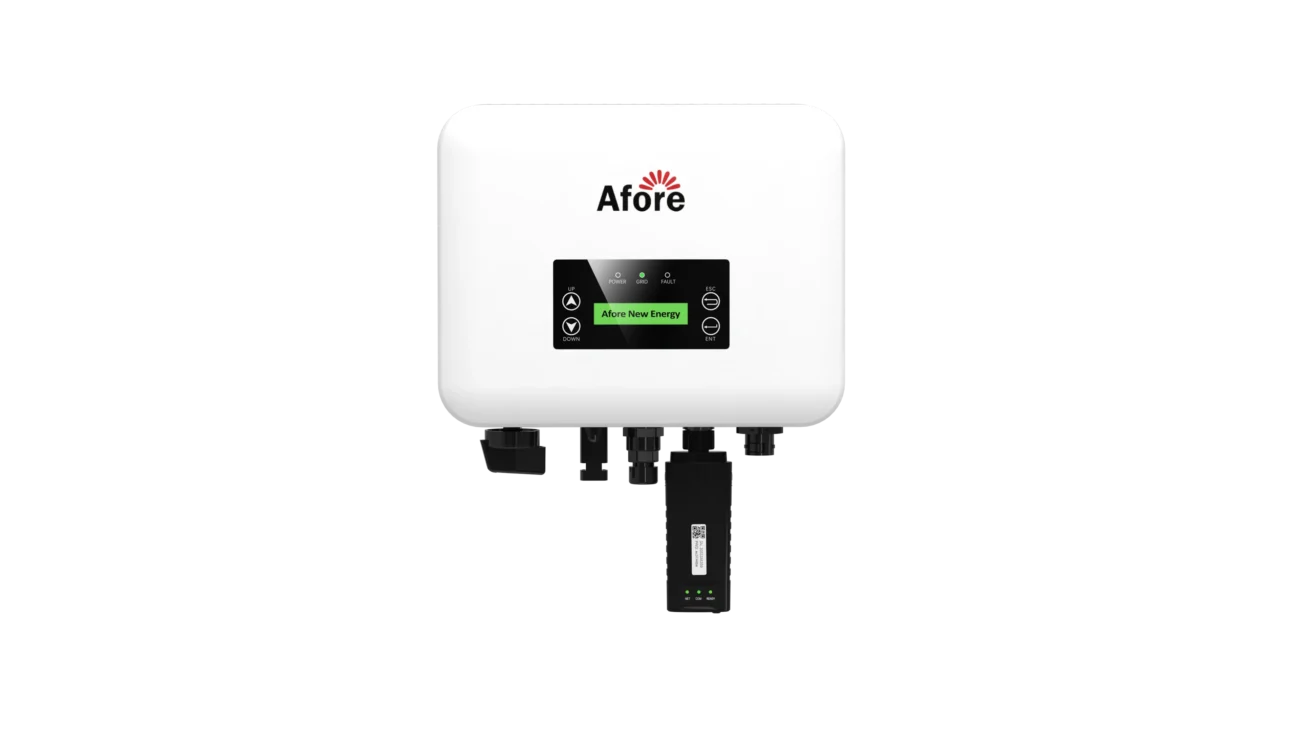
¿Qué es un inversor de conexión a red?
A diferencia de un sistema conectado a la red, un inversor solar aislado está diseñado para una total independencia energética. Permite que un sistema solar funcione sin conexión a la red eléctrica, lo que lo hace ideal para propiedades remotas, instalaciones móviles como vehículos recreativos o propietarios de viviendas que buscan una autonomía total. Este tipo de inversor solar está diseñado para gestionar no sólo la conversión de CC a CA, sino también el almacenamiento de energía, normalmente en un banco de baterías. Esto lo convierte en mucho más que un simple convertidor: es el corazón de su ecosistema energético autónomo.
Tanto si vive fuera de los caminos trillados como si simplemente desea liberarse de las facturas de servicios públicos, comprender cómo funcionan los inversores solares aislados es el primer paso hacia un futuro energético más autosuficiente.
Cómo funcionan los sistemas aislados
Un sistema solar aislado de la red utiliza paneles solares para generar electricidad, almacena esa electricidad en baterías y depende de un inversor solar aislado especializado para gestionar tanto la conversión de potencia como el flujo de energía. A diferencia de los sistemas conectados a la red, que inyectan el exceso de energía a la red, los sistemas aislados deben gestionar la oferta y la demanda internamente, lo que significa que el almacenamiento en baterías no es opcional, sino esencial.
Aquí tienes una descripción simplificada de cómo funciona una instalación aislada típica:
- Generación solar: Durante el día, los paneles solares recogen la energía del sol y la convierten en corriente continua (CC).
- Control de carga: Un regulador de carga solar garantiza que las baterías se carguen de forma segura y eficiente.
- Almacenamiento de energía: Las baterías almacenan la energía de CC para su uso posterior, especialmente durante la noche o en periodos nublados.
- Conversión de energía: El inversor solar aislado convierte la corriente continua almacenada en corriente alterna (CA) para que los electrodomésticos puedan utilizarla.
- Gestión de cargas: El sistema prioriza las cargas (por ejemplo, luces, frigorífico) y evita sobrecargas o fallos del sistema controlando de forma inteligente la distribución de energía.
Los inversores solares aislados avanzados suelen incluir funciones inteligentes como el cambio de carga, la integración de generadores y la supervisión remota. Estos sistemas deben dimensionarse cuidadosamente para satisfacer tanto la demanda de energía máxima como la media, porque cuando la batería se agota y no hay sol, te quedas sin energía a menos que haya un generador de respaldo.
Ventajas de los inversores solares aislados
1. Independencia energética real
Una de las ventajas más significativas de utilizar un inversor solar aislado es su total independencia de las compañías eléctricas. Usted genera, almacena y consume su propia electricidad, sin facturas mensuales, sin recargos por horas punta y sin limitaciones normativas.
2. Ideal para ubicaciones remotas o rurales
Si está construyendo en un lugar donde el acceso a la red eléctrica es limitado, poco fiable o inexistente, un inversor solar aislado ofrece una solución práctica y a menudo rentable. El tendido de líneas eléctricas en zonas rurales puede costar decenas de miles de dólares, un dinero mejor invertido en equipos solares y baterías.
3. Fiabilidad durante los cortes de red
Mientras que los sistemas conectados a la red se apagan durante los apagones por seguridad, un sistema aislado sigue funcionando. Esta capacidad de recuperación es especialmente valiosa en zonas propensas a catástrofes naturales, cortes de electricidad o infraestructuras de red inestables.
4. Diseño de sistema personalizable
Los sistemas aislados no son universales. Puede diseñar una configuración adaptada a sus patrones de uso específicos, necesidades de electrodomésticos y hábitos energéticos. El inversor solar aislado actúa como centro de control, optimizando el rendimiento en función de sus prioridades.
5. Vida sostenible y de bajo impacto
Muchas viviendas aisladas incorporan electrodomésticos de bajo consumo, calefacción/refrigeración pasivas y pautas de uso inteligentes. Cuando se combinan con un inversor solar bien diseñado, se crea un estilo de vida verdaderamente ecológico con una huella de carbono mínima.
6. Integración con generadores de reserva
Un inversor solar aislado bien elegido suele incluir puertos o software para sincronizarse perfectamente con generadores diésel o de propano. Este enfoque híbrido garantiza la cobertura incluso en periodos prolongados de poca luz solar.
Desventajas de los sistemas aislados
1. Coste inicial elevado
Desconectarse de la red no es barato. Además de paneles solares, necesitarás baterías de ciclo profundo (a menudo de litio o plomo-ácido), un inversor solar de gran capacidad y, posiblemente, un generador de respaldo. Esto significa que la inversión inicial puede duplicar o triplicar la de un sistema conectado a la red.
2. Mantenimiento y sustitución de baterías
Las baterías son el talón de Aquiles de los sistemas aislados. Incluso las baterías de iones de litio de alta calidad tienen una vida útil limitada (entre 10 y 15 años). El mantenimiento incluye vigilar el voltaje, evitar la sobredescarga y controlar la temperatura, tareas que a algunos propietarios les resultan engorrosas.
3. Limitaciones del almacenamiento de energía
Como los sistemas aislados no tienen una red eléctrica a la que recurrir, dependen por completo del banco de baterías. Esto exige un uso cuidadoso de la energía durante los periodos nublados o los meses de invierno. Si la batería se agota y no hay sol, te quedas a oscuras, a menos que tengas un generador de respaldo.
4. Diseño e instalación de sistemas complejos
Las instalaciones aisladas exigen precisión. Una capacidad insuficiente del banco de baterías o del inversor puede provocar fallos en el sistema. Un sobredimensionamiento puede generar costes innecesarios. Trabajar con un instalador experimentado es esencial, especialmente a la hora de dimensionar el inversor solar aislado para que coincida con sus requisitos de carga totales.
5. Espacio necesario
Las baterías, los inversores de mayor tamaño y los equipos relacionados ocupan espacio, a menudo más de lo previsto. Esto puede ser un factor limitante para las casas más pequeñas o propiedades sin una sala de máquinas o cobertizo de almacenamiento al aire libre.
6. Sin acceso a la medición neta
Al no estar conectado a la red, no se beneficiará de la venta del exceso de energía a la compañía eléctrica. Aunque esto concuerda con la filosofía de la autosuficiencia, elimina una posible fuente de ingresos de la que disfrutan los usuarios conectados a la red a través de su inversor solar.
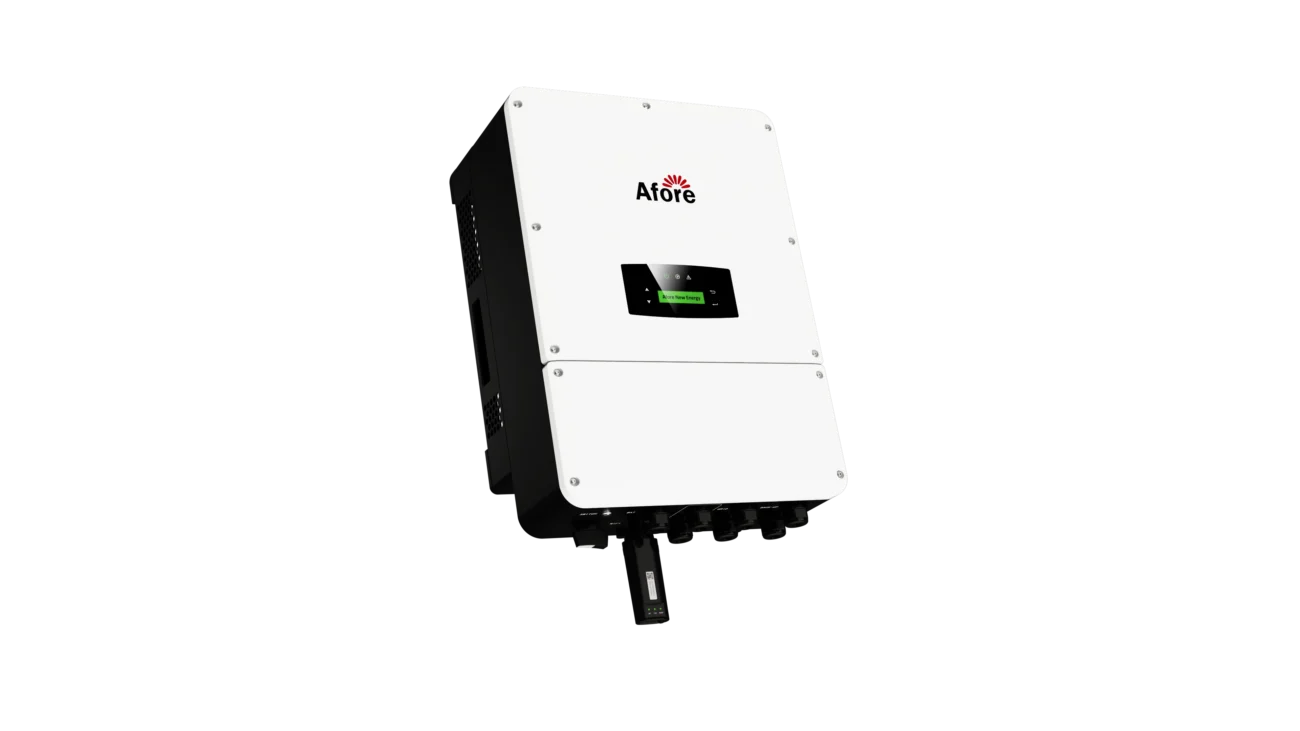
Tabla comparativa de inversores de conexión a red y aislados
Elegir entre un sistema de inversor solar conectado a la red o uno aislado no es sólo una decisión técnica, es una elección de estilo de vida. Ambos sistemas convierten la energía solar en electricidad utilizable a través de un inversor solar, pero sus diseños, aplicaciones y ventajas varían significativamente. Tanto si prioriza el coste, la independencia o la resistencia, el sistema adecuado dependerá de sus necesidades y objetivos específicos.
A continuación encontrará una comparación detallada de los dos tipos de sistemas, en la que se destacan los aspectos más importantes que debe tener en cuenta a la hora de invertir en energía solar.
Comparación
| Característica | Inversores de conexión a red | Inversores de conexión a red |
| Función de inversor primario | Convierte la CC en CA y se sincroniza con la red pública | Convierte CC en CA y gestiona el flujo de energía de forma independiente |
| Fuente de energía | Paneles solares + red eléctrica | Paneles solares + acumulador de baterías (generador opcional) |
| Requisitos de la batería | Opcional (normalmente sin batería) | Obligatorio para alimentación continua |
| Rendimiento durante una interrupción de la red | El sistema se apaga (no hay corriente) | Sigue suministrando energía mediante pilas |
| Coste inicial | Menor inversión inicial | Mayor debido a las necesidades de baterías e inversores avanzados |
| Mantenimiento | Bajo; principalmente revisiones del inversor y del panel | Moderado a alto; incluye el cuidado de la batería y la gestión de la carga |
| Complejidad del sistema | Diseño sencillo; componentes mínimos | Más complejo; requiere un dimensionamiento preciso de la carga y el almacenamiento |
| Vida útil del inversor | ~10-15 años con un uso regular | ~12-20 años con un mantenimiento adecuado |
| Independencia energética | Baja; depende de la compañía eléctrica | Alta; sin dependencia de la red externa |
| Lugares adecuados | Zonas urbanas y suburbanas con una red estable | Zonas remotas, rurales o propensas a catástrofes |
| Requisitos para la medición neta | Sí; posible rendimiento financiero | No; no hay interacción con la red |
| Impacto medioambiental | Positivo; reduce la demanda de la red | Muy positivo; autosostenibilidad total posible |
| Integración del generador de reserva | Opcional y menos común | Suele incluirse para días nublados prolongados o redundancia del sistema |
| Supervisión y funciones inteligentes | Disponible en la mayoría de los inversores modernos | A menudo incluye la gestión de la carga y el análisis de la energía no conectada a la red. |
Elegir el sistema adecuado a sus necesidades
Decidir entre un sistema de inversor solar conectado a la red o uno aislado no es sólo cuestión de presupuesto o ubicación, sino de conocer sus objetivos energéticos a largo plazo y saber cómo encaja la tecnología solar en su estilo de vida. Con la aceleración de la adopción de la energía solar en todo el mundo, cada vez más propietarios de viviendas y empresas se enfrentan a esta elección crucial. La configuración correcta del inversor solar dependerá de una combinación de factores técnicos, necesidades prácticas y valores personales.
Aunque ambos sistemas ofrecen energía limpia y renovable mediante paneles solares e inversores, sirven para fines muy distintos. Algunos dan prioridad a la autosuficiencia, mientras que otros quieren maximizar el ahorro. A continuación te explicamos qué solución te conviene más.
Factores a tener en cuenta
1. Ubicación y fiabilidad de la red
Su ubicación física es uno de los factores más decisivos. Si vive en una zona con acceso estable a la red y cortes mínimos, un sistema conectado a la red puede ser la solución más eficaz y rentable. Sin embargo, en zonas remotas o rurales donde la red no es fiable o no está disponible, un sistema de inversor solar aislado no sólo es preferible, sino necesario.
2. Patrones de consumo de energía
¿Tienes un hogar de bajo consumo o utilizas aparatos que consumen mucha energía, como sistemas de calefacción, ventilación y aire acondicionado, calefactores eléctricos o cargadores de vehículos eléctricos? Sus patrones de uso determinarán el tamaño que debe tener su sistema y si debe incluir almacenamiento de energía. Para vivir sin conexión a la red, es fundamental dimensionar con precisión el inversor solar aislado y el banco de baterías para evitar quedarse sin energía.
3. Presupuesto y expectativas de rentabilidad
Un sistema conectado a la red suele ofrecer un retorno de la inversión más rápido gracias a unos costes iniciales más bajos y a la posibilidad de medición neta. Por el contrario, un inversor solar aislado es más caro al principio, pero se amortiza con el tiempo al eliminar por completo las facturas de electricidad. Considere cuánto tiempo piensa permanecer en su casa, su acceso a incentivos solares y su tolerancia al gasto inicial.
4. Deseo de independencia energética
Algunos propietarios de viviendas están motivados por la independencia: quieren producir, gestionar y almacenar su propia electricidad sin depender de un proveedor de servicios públicos. En estos casos, un sistema de inversor solar aislado ofrece la máxima autonomía y seguridad. Esta independencia es especialmente valiosa en zonas propensas a sufrir catástrofes naturales o en mercados inestables.
5. Necesidades de energía de reserva
¿Frecuentes cortes de electricidad? ¿Inestabilidad de la red? Si la resistencia es importante para usted, un sistema básico conectado a la red no será suficiente. Necesitará un inversor solar aislado o un sistema híbrido que incluya almacenamiento de reserva para mantener la luz cuando la red se caiga.
6. Disponibilidad de espacio
El almacenamiento en baterías requiere espacio físico. Si tiene poco espacio, un sistema conectado a la red puede ser más práctico. Pero si tienes un garaje, un sótano o una dependencia, alojar un sistema de inversor solar aislado, incluidos los bancos de baterías, es mucho más fácil.
7. Conocimientos técnicos y compatibilidad con el estilo de vida
La vida sin conexión a la red suele requerir un enfoque más práctico. Controlar el estado de la batería, ajustar el uso de la energía en función de la luz solar y comprender el rendimiento del inversor solar forman parte del estilo de vida. Si prefiere una experiencia de "configúrelo y olvídese", un sistema conectado a la red puede ser más fácil de usar.
Opción híbrida: ¿Lo mejor de los dos mundos?
¿Y si no quiere comprometerse plenamente con una vía? Entre en la inversor solar híbrido - una tendencia creciente que combina los puntos fuertes de los sistemas conectados a la red y los no conectados.
Un sistema híbrido suele funcionar así:
- Durante el día: Los paneles solares generan electricidad. El sistema alimenta primero tu casa, luego carga la batería y, por último, exporta el excedente a la red.
- Por la noche o durante los apagones: La batería se descarga para mantener la casa en funcionamiento. Si la batería se agota, la energía procede de la red.
¿Por qué una configuración híbrida?
- Potencia de reserva sin fisuras
Un inversor solar híbrido incorpora gestión de baterías y conmutación inteligente. Si falla la red, pasa automáticamente a alimentarse de la batería, a menudo con tanta rapidez que ni te darás cuenta.
- Optimización de los costes energéticos
Los sistemas híbridos pueden almacenar energía durante las horas de menor consumo y descargarla cuando las tarifas son más altas, una característica conocida como cambio de carga en función del tiempo de uso. El inversor solar desempeña un papel fundamental en la gestión eficiente de este ciclo.
- Escalado flexible del sistema
Puede empezar con un sistema conectado a la red y ampliarlo a híbrido más adelante. Muchos inversores solares híbridos están preparados para funcionar con baterías, lo que permite ampliar el sistema en el futuro sin sustituir el hardware principal.
- Resiliencia y autonomía
Aunque no son totalmente independientes, como un inversor solar aislado, los sistemas híbridos ofrecen una excelente protección en caso de apagones o emergencias, sin renunciar a las ventajas económicas de estar conectado a la red.
- Aumento del valor de la propiedad
Las casas equipadas con sistemas de energía solar + batería son cada vez más atractivas para los compradores. Una configuración híbrida moderna con un inversor solar fiable y almacenamiento de energía puede aumentar el valor y el atractivo de tu casa.
¿Le conviene la tecnología híbrida?
Si no se atreve a desconectarse completamente de la red, pero quiere más seguridad de la que ofrece un sistema estándar conectado a la red, una solución híbrida puede ser ideal. Ofrece la fiabilidad de las baterías, el ahorro de la medición neta y la flexibilidad para adaptarse a la evolución de tus necesidades energéticas.
Piense en ella como si fuera la navaja suiza de su sistema solar: versátil, adaptable y diseñada para hacer frente a la incertidumbre.

Vida útil y mantenimiento de los inversores de conexión a red
Vida útil de los inversores de conexión a red
Un inversor de conexión a red típico dura entre 10 y 15 años, dependiendo de los patrones de uso, los factores ambientales y la calidad de construcción. Las temperaturas elevadas o una ventilación deficiente pueden reducir la vida útil, mientras que unos componentes de calidad y un mantenimiento rutinario pueden alargarla.
Consejos de mantenimiento para una larga vida útil
Para mantener su inversor de conexión a red en perfecto estado:
- Garantizar una ventilación adecuada
- Limpie el polvo y los residuos con regularidad
- Control del rendimiento mediante aplicaciones inteligentes
- Programar revisiones profesionales periódicas
Un inversor solar aislado bien mantenido puede durar fácilmente entre 15 y 20 años, lo que le ahorrará miles de euros con el tiempo.
Impacto medioambiental y económico
Beneficios medioambientales
Ambos sistemas promueven la energía limpia, reduciendo las emisiones de carbono y la dependencia de los combustibles fósiles. Sin embargo, los inversores solares aislados ofrecen ventajas medioambientales adicionales al evitar las pérdidas de energía ligadas a la transmisión a la red.
Ahorro de costes y rendimiento de la inversión
Los sistemas conectados a la red suelen ofrecer un retorno de la inversión más rápido debido a los menores costes iniciales e incentivos. Dicho esto, los sistemas de inversores solares aislados ofrecen ahorros a largo plazo al eliminar por completo las facturas de electricidad.
Piense en esto: A lo largo de 25 años, un sistema inversor solar aislado bien diseñado podría ahorrar a un propietario rural más de $40.000, incluso después de sustituir las baterías.
Conclusión
Elegir entre un sistema de inversores solares conectado a la red o aislado es una decisión importante. Afecta a su seguridad energética, sus finanzas y su estilo de vida. Mientras que los inversores conectados a la red son rentables y sencillos, los inversores solares aislados ofrecen una autonomía y resistencia inigualables.
Si vive en una zona remota o desea controlar totalmente su producción de energía, el inversor solar aislado es la solución perfecta. Para otros que buscan ahorro y simplicidad, la conexión a la red puede ser suficiente, pero recuerde que la energía se corta cuando lo hace la red.
Sea cual sea el camino que tome, invierta en un inversor solar de calidad - porque no es sólo un componente, es tu puerta a la independencia solar.
Preguntas frecuentes
-
¿Qué es mejor, un sistema solar conectado a la red o uno aislado?
No hay una respuesta única para todos los casos: depende totalmente de sus objetivos, ubicación y estilo de vida. Si se encuentra en una zona con electricidad fiable y desea reducir sus facturas de electricidad con la mínima complejidad, un sistema conectado a la red es probablemente su mejor opción. Sin embargo, si la independencia energética, la protección contra apagones o la vida en lugares remotos es importante para usted, entonces un sistema de inversor solar aislado de la red es la elección clara. Muchos propietarios optan ahora por sistemas híbridos para obtener lo mejor de ambos mundos.
-
¿Cuáles son las desventajas de un sistema solar conectado a la red?
El principal inconveniente de un sistema conectado a la red es su dependencia de ésta. Si se va la luz, la instalación solar también se apaga, aunque los paneles estén produciendo electricidad. Esta característica de seguridad, llamada anti-islanding, está diseñada para proteger a los trabajadores de la compañía eléctrica. Además, los sistemas conectados a la red a menudo dependen de incentivos políticos como la medición neta, que varían según el estado y pueden disminuir con el tiempo. A diferencia de un inversor solar aislado, no hay almacenamiento de energía a menos que se añada una batería.
-
¿Cuál es la esperanza de vida de un inversor conectado a la red?
Un inversor solar conectado a la red de calidad suele durar entre 10 y 15 años, dependiendo del uso, la exposición a la intemperie y el mantenimiento. Los modelos de gama alta con sistemas avanzados de refrigeración y protección contra sobretensiones pueden durar más. Tenga en cuenta que los inversores suelen ser el primer componente de un sistema solar que hay que sustituir. En comparación, un inversor solar aislado bien mantenido -especialmente en un sistema basado en baterías con ciclos moderados- puede llegar a durar hasta 20 años.
-
¿Puedo cambiar de un sistema conectado a la red a uno aislado más adelante?
Sí, pero requiere planificación. Si su inversor solar actual no es compatible con baterías, probablemente tendrá que sustituirlo por un inversor solar aislado o un modelo híbrido. También tendrá que añadir baterías de almacenamiento, posiblemente recablear partes de su sistema y asegurarse de que su demanda de energía se ajusta adecuadamente a su capacidad de almacenamiento. Aunque la transición es técnicamente factible, es mejor realizarla con ayuda de un profesional del diseño y la instalación.
-
¿Funcionan los sistemas aislados en días nublados?
Sí, si tienen el tamaño adecuado. Un sistema de inversor solar aislado bien diseñado incluye baterías con capacidad suficiente para suministrar energía durante los días de sol limitado. Las baterías modernas (especialmente las de litio hierro fosfato) son eficientes para almacenar energía solar durante 1-3 días de uso, dependiendo del diseño del sistema. Para los periodos nublados prolongados, muchos hogares sin conexión a la red incluyen un generador de reserva que garantiza el suministro ininterrumpido de energía.
-
¿Es más caro un inversor solar aislado?
En general, sí. El mayor coste se debe a la necesidad de baterías, inversores más grandes y sistemas inteligentes de gestión de la energía. Un inversor solar aislado de calidad debe gestionar tanto la conversión de energía como la carga y descarga de las baterías, lo que lo hace más complejo que un inversor conectado a la red. Sin embargo, para los propietarios de viviendas que buscan independencia a largo plazo y protección frente al aumento de las tarifas de los servicios públicos, el coste inicial suele compensarse con el tiempo.
-
¿Merecen la pena los inversores híbridos?
En muchos casos, absolutamente. Un inversor solar híbrido le permite disfrutar de las ventajas económicas de la conectividad a la red y, al mismo tiempo, disponer de baterías de reserva para los cortes de suministro. Es ideal para los propietarios que desean flexibilidad, ampliación del sistema a largo plazo y protección contra la volatilidad de los precios de la energía. Muchos inversores híbridos pueden incluso funcionar en "modo aislado" temporalmente si falla la red, aunque siguen necesitando la conexión a la red para funcionar plenamente.
-
¿Puedo vender electricidad a la red con un sistema conectado a la red?
Sí, es una de las principales ventajas de la energía solar conectada a la red. A través de la medición neta, cualquier exceso de electricidad que produzca su sistema se exporta a la red, y su cuenta de servicios públicos recibe un crédito. El inversor solar gestiona automáticamente este flujo bidireccional de energía. Sin embargo, las políticas de medición neta varían según la región y el proveedor de servicios públicos, por lo que es esencial confirmar las normas vigentes en su área antes de tomar una decisión.
-
¿Qué mantenimiento requiere un inversor solar aislado?
Aunque la mayoría de los inversores solares aislados están diseñados para ser fiables, necesitan inspecciones periódicas. Entre las tareas clave se incluyen:
-Asegurar una ventilación adecuada y un funcionamiento sin polvo.1
-Control de los índices de carga y descarga a través del panel de control del sistema
-Actualización del firmware para las funciones del inversor inteligente.
-Ocasionalmente restablecer o calibrar los ajustes después de cambiar la batería.
También es crucial controlar el estado y la temperatura de la batería, ya que influyen directamente en el rendimiento del inversor y en la estabilidad general del sistema. -
¿Es necesario un inversor solar para ambos sistemas?
Sí, tanto si está conectado a la red como si no, un inversor solar es esencial. Convierte la corriente continua de los paneles solares en la corriente alterna que utiliza su casa o su empresa. En los sistemas conectados a la red, también gestiona la sincronización con la red y la medición neta. En los sistemas de inversores solares aislados, se encarga del almacenamiento de energía, el flujo de potencia y la gestión de la carga crítica. Sin él, la energía solar sigue siendo inutilizable para los aparatos estándar.




